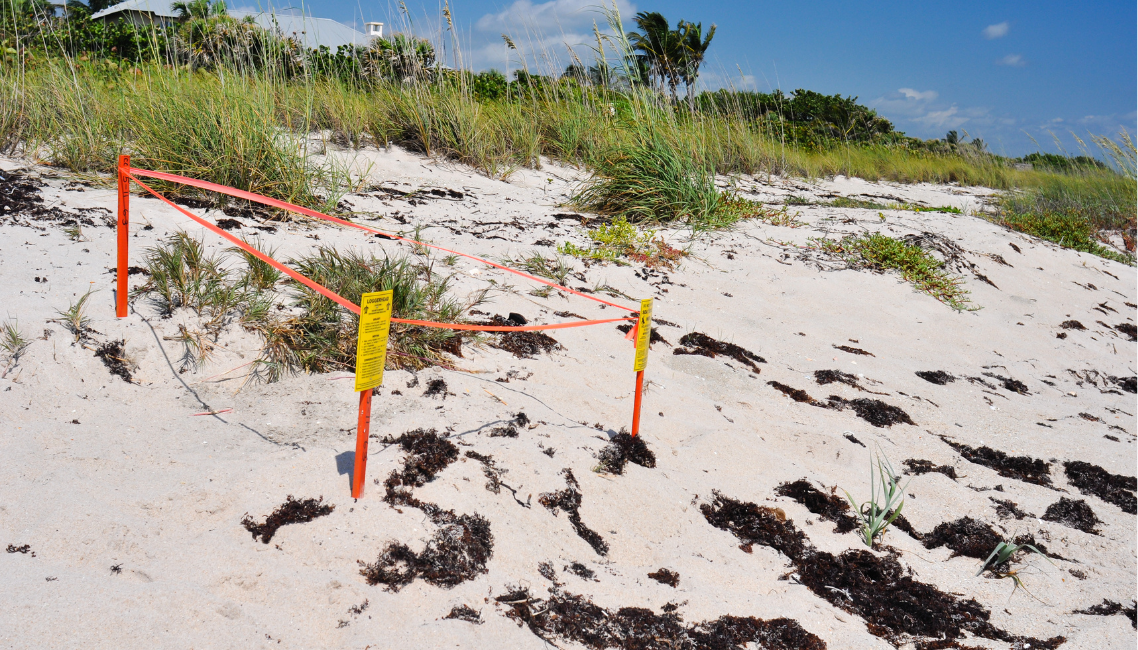If you’re vacationing on the Gulf Coast this summer, you may find that you're not the only one enjoying the shoreline. From May 1 to October 31, it’s sea turtle nesting season in Sarasota County and throughout much of coastal Florida — and that means some very special guests are making their way to the sand.
During the first half of the season, female sea turtles come ashore to lay eggs, building nests carefully in the sand. Starting around July, the hatchlings begin emerging, racing toward the Gulf under the cover of night.
Why It Matters
Sarasota County is home to the highest density of loggerhead sea turtle nests in the Gulf of Mexico, and nearby Mote Marine Laboratory & Aquarium monitors over 35 miles of shoreline in Sarasota and Manatee Counties each year. Their work, in collaboration with state and federal agencies, helps protect and preserve these incredible creatures—some of which are endangered.
Sadly, only about 1 in 1,000 sea turtle hatchlings survive to adulthood. The biggest threats? Predators, pollution, and bright artificial lights that disorient these tiny travelers on their way to the sea.
How You Can Help During Your Beach Stay
As a visitor, you play an important role in helping sea turtles survive and thrive. Here are a few easy ways to be a turtle-friendly guest during your time on the Gulf Coast:
- Avoid marked nests. Look for areas surrounded by wooden stakes and yellow/orange tape—those are active nesting sites.
- Leave the beach as you found it. Knock down sandcastles, fill in holes, and remove furniture, umbrellas, and toys at the end of the day.
- Keep lights low at night. Flashlights, phone screens, and even indoor lights from beachfront rentals can disorient hatchlings. If you need light, dim your screen and shield it with your hand.
- No photos of nests or hatchlings. Flash photography can confuse or frighten the turtles.
- Give turtles space. If you're lucky enough to see a nesting turtle or hatchlings, observe from a distance and stay quiet.
Want to See Sea Turtles Up Close?
You can safely view sea turtles in a few different ways:
Visit Mote Marine Laboratory & Aquarium
Mote’s Sea Turtle Conservation & Research Program and Sea Turtle Rehabilitation Hospital are great ways to learn more. Visit their upcoming Mote SEA campus (opening later this year) to see educational exhibits and learn about conservation firsthand. mote.org
Join a Turtle Walk on Longboat Key
Every Saturday morning in June and July, Longboat Key Turtle Watch hosts free public turtle walks at 6:45 a.m. (no registration needed). Meet at the public beach access at 4795 Gulf of Mexico Drive and learn about recent nesting activity. Evening hatchling events are also hosted in July and August, announced a few days in advance. Learn more here: https://www.lbkturtlewatch.com/ Their facebook page is https://www.facebook.com/LongboatKeyTurtleWatch/
Sponsor a Nest
Want to do more? You can adopt a sea turtle nest through Longboat Key Turtle Watch! Name a nest, support conservation, and receive email updates about your nest’s progress—perfect for families and turtle lovers alike.
Another great group is the Coastal Wildlife Club, which monitors 16 miles of coastline daily between Venice and Manasota Key. Support their all-volunteer team or check their Facebook page for nesting updates and photos.
Who to Call If You See a Stranded Turtle
- Mote Marine Stranding Investigations Program's 24-hour Hotline: 888-345-2335
- Florida Fish & Wildlife (FWC) Wildlife Alert: 1-888-404-FWCC (3922)

